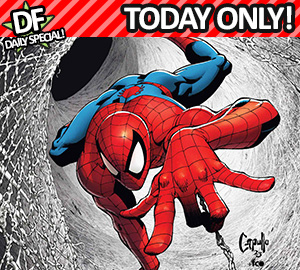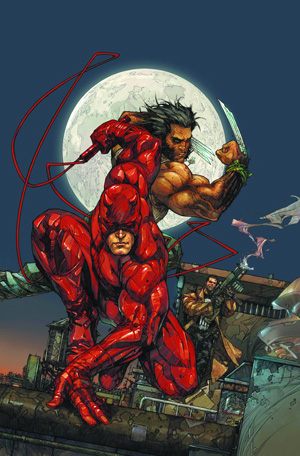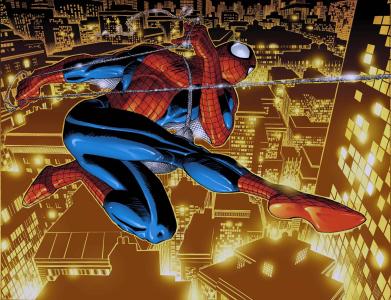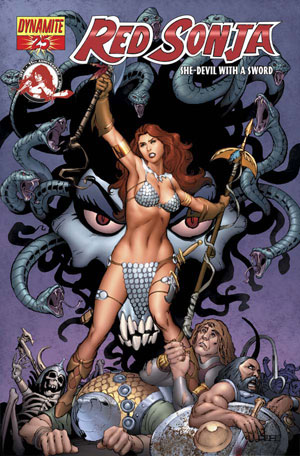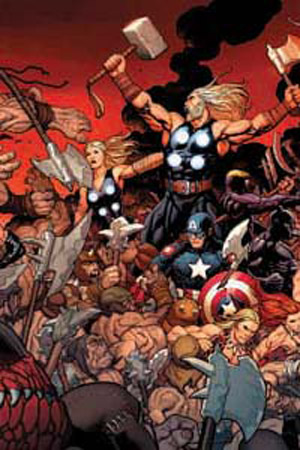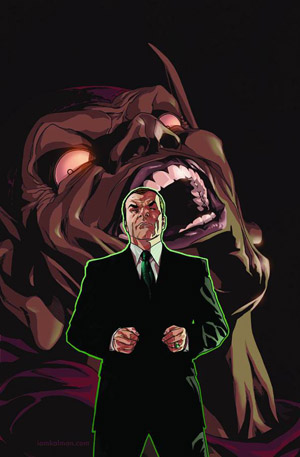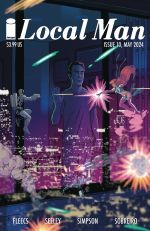|

|
SPIDER-MAN Spider-Man (Peter Parker) is a Marvel Comics superhero character created by Stan Lee and Steve Ditko. Since his incarnation and first appearance in Amazing Fantasy #15 (Aug. 1962), he has become one of the world's most popular, enduring and recognizable superheroes.
When Spider-Man first saw print in the 1960s, teenage characters in superhero comic books were usually sidekicks. The Spider-Man series broke ground by featuring a hero who himself was an adolescent, to whose "self-obsessions with rejection, inadequacy, and loneliness" young readers could relate. Spider-Man has since appeared in various media including several animated and live-action television series, syndicated newspaper comic strips and a successful series of films.
Marvel has published several Spider-Man comic book series, the first being The Amazing Spider-Man. Over the years, the Peter Parker character has developed from shy high school student to troubled college student to a married teacher and a member of the superhero team the Avengers.
Stan Lee said that the idea for Spider-Man arose from a surge in teenage demand for comic books, and the desire to create a character with which teens could identify. In his autobiography, Lee cites the non-superhuman pulp magazine crime fighter The Spider as an influence. In the documentary Stan Lee's Mutants, Monsters and Marvels and elsewhere, Lee says he was inspired by seeing a fly climb up a wall, although he adds that he has told the story of Spider-Man's origins so often he has become unsure of whether or not it is true. Lee approached Marvel publisher Martin Goodman to seek approval for the character. In a 1986 interview with the Detroit News, he described in detail his arguments to overcome Goodman's objections.
Jack Kirby, in a 1982 interview, claimed Lee had minimal involvement in the character's creation, and that it had originated with Kirby and Joe Simon, who in the 1950s had proposed a character called The Silver Spider for the Crestwood comic Black Magic until the publisher went out of business.
Simon, in his 1990 autobiography, disputes Kirby's account, asserting that the supernatural anthology Black Magic was not a factor, and that he (Simon) devised the name "Spiderman" (later changed to "The Silver Spider"), while Kirby outlined the character's story and Powers.
Comics historian Greg Theakston says that Lee, after receiving Goodman's approval for the name Spider-Man and the "ordinary teen" concept, approached Kirby. Kirby told Lee about his 1950s Silver Spider/Spiderman, in which an orphaned boy living with an old couple finds a magic ring that gives him superPowers. Lee and Kirby "immediately sat down for a story conference" and Lee afterward directed Kirby to flesh out the character and draw some pages. "A day or two later", Kirby showed Lee the first six pages, and, as Lee recalled, "I hated the way he was doing it. Not that he did it badly - it just wasn't the character I wanted; it was too heroic". Joe Simon concurs that Kirby showed the original Spiderman version to Lee, who liked the idea and gave Kirby the assignment, but who ultimately disliked the results - in Simon's description, "Captain America with cobwebs".
Lee turned to artist Steve Ditko, who had originally been scheduled to ink the new character. Ditko developed a visual motif Lee found satisfactory, although Lee ironically later replaced Ditko's cover with one penciled by Kirby. As Ditko recalled:
" "The Spider-Man pages Stan showed me were nothing like the (eventually) published character. In fact, the only drawings of Spider-Man were on the splash [page, e.g., page 1] and at the end. At the end, Kirby had the guy leaping at you with a web gun... Anyway, the first five pages took place in the home, and the kid finds a ring and turns into Spider-Man. "
Joe Simon later elaborated that his and Kirby's Silver Spider became the basis for Simon's Archie Comics character The Fly, introduced in early 1959. Simon says Ditko recognized that Kirby's Spiderman was highly similar to the Fly, and designed his own original version, which Lee dubbed Spider-Man. Ditko's recollections in Comic Book Artist #3 (Winter 1999) were similar. Much earlier, in a rare contemporaneous account, Ditko described his and Lee's contributions in a mail interview with Gary Martin published in Comic Fan #2 (Summer 1965): "Stan Lee thought the name up. I did costume, web gimmick on wrist & spider signal". Additionally, Ditko shared a Manhattan studio with noted fetish artist Eric Stanton, an art-school classmate who, in a 1988 interview with Theakston, recalled that although his contribution to Spider-Man was "almost nil", he and Ditko had "worked on storyboards together and I added a few ideas. But the whole thing was created by Steve on his own... I think I added the business about the webs coming out of his hands".
Commercial success
According to Tom DeFalco in his book, Spiderman: The Ultimate Guide, "When Stan learned that Amazing Adult Fantasy was about to be canceled, he dropped a word out of the title and put Spidey on the cover. He figured that even Martin wouldn't care if the web-swinger was a failure." Spider-Man was introduced in Amazing Fantasy #15, 1962. Due to positive sales and fan mail resulting from the issue, the character received his own title, The Amazing Spider-Man, the following year, which became Marvel's best-selling series. The character quickly became a cultural ICON; a 1965 Esquire poll of college campuses found that college students ranked Spider-Man and fellow Marvel hero The Hulk alongside Bob Dylan and Che Guevara as their favorite revolutionary ICONs. One interviewee selected Spider-Man because he was "beset by woes, money problems, and the question of existence. In short, he is one of us". Following Ditko's departure after issue #39, John Romita, Sr. became the character's next-most-associated signature artist, penciling the character over the several following years.
The Amazing Spider-Man #96 (May 1971), the first of three non-Comics Code issues that prompted the Code's first update, allowing comics to show the negative effects of illegal-drug use. Note cover-blurb reference to "The last fatal trip!" Cover art by Gil KaneAn early 1970s Spider-Man story led to the revision of the Comics Code. Previously, it was taboo to depict illegal drugs, even negatively. However, in 1970 the Nixon administration's Department of Health, Education, and Welfare asked Stan Lee to run an anti-drug message in one of Marvel's top-selling titles. Lee chose the top-selling The Amazing Spider-Man; issues #96-98 (May-July 1971) feature a story arc that shows the negative effects of drug abuse. In the story, Peter Parker's friend Harry Osborn starts taking pills and becomes so ill that when Spider-Man fights the Green Goblin (Norman Osborn), Spider-Man defeats Norman by simply showing him his sick son. While the story had a clear anti-drug message, the Comics Code Authority refused to issue its seal of approval. Marvel nevertheless sold the three issues without the Comics Code Authority's approval or seal and sold so well that the industry's self-censorship was undercut.
In 1972, a second monthly ongoing series starring Spider-Man began: Marvel Team-Up, in which Spider-Man is paired with other superheroes. In 1976, his second solo series, Peter Parker, The Spectacular Spider-Man began, running parallel to the main series; a third solo series, Web of Spider-Man, launched in 1985, replacing Marvel Team-Up. The launch of a fourth monthly title in 1990, written and drawn by popular artist Todd McFarlane, debuted with multiple variant covers and sold in excess of three million copies of its premiere issue, an industry record at the time. There have generally been at least two ongoing Spider-Man series at any time, with a typical minimum of four comics starring the character published each month. Several limited series, one-shots and loosely related comics have also been published, and Spider-Man makes frequent cameos and guest appearances in other comic series.
Spider-Man has become Marvel's flagship character, and is often seen as an Image representing the entire company. When Marvel became the first comic book company to be listed on the New York Stock Exchange in 1991, the Wall Street Journal announced "Spider-Man is coming to Wall Street"; the event was in turn promoted with an actor in a Spider-Man costume accompanying Stan Lee to the Stock Exchange. When Marvel wanted to issue a story dealing with the immediate aftermath of the September 11th, 2001 attacks, the company settled on the December 2001 issue of The Amazing Spider-Man. In 2006, Spider-Man garnered major media coverage with the revealing of the character's secret identity, an event detailed in a full-page story in the New York Post before the issue containing the story was even released.
In 1999, after a decline in sales that began with the clone storyline, John Byrne revised the origin of Spider-Man in Spider-Man: Chapter One, just as he earlier reinvented Superman's origin in The Man of Steel. The changes were mentioned in the contemporary comics (which Byrne co-wrote with Howard Mackie), but the attempt was not popular and Marvel writers returned to the Lee/Ditko origin.
The publisher relaunched The Amazing Spider-Man and Peter Parker: Spider-Man with new #1 issues and canceled The Sensational Spider-Man Vol. 1 and The Spectacular Spider-Man Vol. 1.
As of the beginning of 2007, Spider-Man regularly appears in The Amazing Spider-Man, New Avengers, The Sensational Spider-Man, Friendly Neighborhood Spider-Man, Spider-Man Family, Spider-Man Loves Mary Jane, The Spider-Girl'>Amazing Spider-Girl, Ultimate Spider-Man, Marvel Adventures Spider-Man, Marvel Adventures: The Avengers and the limited series Spider-Man: Reign, Ultimate Power and Civil War.
Fictional character biography
Main article: Fictional history of Spider-Man
In his first appearance, teenager Peter Parker is introduced as being bitten by a radioactive spider during a science demonstration. He gains Powers and at first attempts to become a TV star. He fails to stop a thief, and weeks later the same criminal kills his Uncle Ben. Learning that with great power comes great responsibility, Spider-Man becomes a vigilante. As he battles his enemies for the first time, Parker finds juggling his personal life and costumed adventures difficult, even attempting to give up Enemies constantly endanger his loved ones, with the Green Goblin managing to kill his girlfriend Gwen Stacy.
Powers and equipment
Main article: Spider-Man's Powers and equipment
The different costumes of Spider-Man. Art by Leinil Francis Yu.A bite from an irradiated spider causes a variety of changes in Peter Parker's body, giving him superPowers. In the original Lee-Ditko stories, Spider-Man has the ability to cling to walls, superhuman strength, a sixth sense ("spider-sense") that alerts him to danger, perfect balance and equilibrium, as well as superhuman speed and agility. In story-lines published in 2005 and 2006 (such as The Other), he develops additional spider-like abilities including biological web-shooters, toxic stingers that extend from his forearms, and night vision. Spider-Man's strength and speed have also increased beyond his original limits.
Peter Parker is intellectually gifted, excelling in applied science and chemistry, and uses his wits in addition to his Powers. Besides outsmarting his foes, he constructs many devices that complement his Powers, most notably mechanical web-shooters (ejecting an advanced adhesive compound which dissolves after two hours), which he developed in his teenage years. They are capable of releasing web-fluid in a variety of configurations, including a single strand to swing from, a net, and a simple glob to foul machinery or blind an opponent. He can also weave the web material into simple forms like a shield, a spherical protection or hemi-spherical barrier, a club, or a hang-glider wing. Other equipment includes spider-tracers (spider-shaped adhesive homing beacons keyed to his own spider-sense), a light beacon which can either be used as a flashlight or project a "Spider-Signal" design, a specially modified camera that can take pictures automatically, and the Spider-Mobile (equipped with large web-shooters, and able to drive up walls and disguise itself as an ordinary car). He has also used an invention of Ben Reilly's, a clone of Peter Parker, called "impact webbing": a pellet that explodes on impact into a wrap-around net of webbing.
Though lacking in directed training, Spider-Man is one of the most experienced superheroes in the Marvel Universe. He has worked with virtually everyone in the superhero community at one time or another. Due to this experience, he has beaten foes with far greater Powers and abilities. His fighting style is purely freestyle, which incorporates his speed, agility, strength and spider-sense. A very large part of his combat ability is improvisation and using his wits to outthink his opponents. One constant is his habit of using jokes, puns and insults. This not only causes his adversaries to become angry and distracted, but it also helps Spider-Man deal with any fears or doubts that he might have during a battle.
Spider-Man has had a few costume changes over his history, with three notable costumes -- his traditional red-and-blue costume, the black-and-white alien symbiote, and the technologically advanced Stark Armor costume designed by Tony Stark. In early comics and sporadically throughout his run depending on a given artist's interpretation, Spider-Man's costume included webbing that extended from his underarms to his torso.
Spider-Man editor Axel Alonso said in a November 2006 interview that Spider-Man will again wear his black costume beginning February 2007 partially, but not primarily, due to the third Spider-Man film. In the aftermath of the Civil War Spider-Man goes "underground" with other rogue superheroes that choose not to comply with the new laws. Since he revealed his secret identity to the world and no longer has Tony Stark's resources at his disposal, Spider-Man chooses to go back to the black costume, leaving behind his traditional red and blues.
Enemies
Main article: Spider-Man villains
Spider-Man has one of the best-known rogues galleries in comics, including Hobgoblin, the Lizard, the Scorpion, the Sandman, the Rhino, Mysterio, Hydro Man, Dr. Octopus, Shocker, the Vulture, Electro, Kraven the Hunter, Venom, Carnage, Kingpin, and the defective clone Kaine. As with Spider-Man, the majority of these villains' Powers originate with scientific accidents or the misuse of scientific technology, and they tend to have animal-themed costumes or Powers. At times these villains have formed groups such as the Sinister Six to oppose Spider-Man.
Spider-Man's most infamous and dangerous enemies are generally considered to be: the Green Goblin, Doctor Octopus,Venom, and Carnage.
Supporting characters
Main article: Spider-Man supporting characters
Spider-Man, his Aunt May and wife Mary Jane.
Art by Mike Deodato.Spider-Man was conceived as an ordinary person given great power, and the comics detail his civilian life, friends, family and romances as much as his super-heroic adventures.
Some of the more important and well-known members of his extensive supporting cast include:
Aunt May - Peter Parker's loving aunt, who raises him after his parents die. After the murder of her husband, Peter's Uncle Ben, May is virtually his only family, and they are very close.
Gwen Stacy - Peter's college girlfriend, who is tragically murdered by the Green Goblin.
Betty Brant - Secretary at the Daily Bugle who was once was in love with Peter
J. Jonah Jameson - the irascible publisher of the Daily Bugle newspaper. While he employs Peter Parker as a photographer, he is also Spider-Man's greatest critic and largely responsible for the public's distrust of the hero.
Joseph "Robbie" Robertson - Editor-in-chief at the Daily Bugle, a moderating influence on Jameson, and a father figure to Peter after Uncle Ben's Death.
Mary Jane Watson - originally merely Gwen Stacy's competition, MJ eventually becomes Peter's best friend and wife.
Flash Thompson - Peter Parker's high school tormentor, later one of his closest friends. Due to brain damage, he suffers amnesia and regresses to his bullying personality.
Harry Osborn - Peter's best friend in college, who eventually follows his father's footsteps and becomes the second Green Goblin.
Black Cat, Felicia Hardy - a reformed cat burglar who is Spider-Man's lover and partner at one point.
Other versions of Spider-Man
Main article: Alternate versions of Spider-Man
In other media
Main article: Spider-Man in other media
Bibliography
Main article: Bibliography of Spider-Man titles
Spider-Man first appeared in Amazing Fantasy #15. After that, he was given his own series. Many followed, and as of July 2006, the related titles are:
The Amazing Spider-Man #1-441, Vol. 2 #1-58, #500- (Marvel Comics; March 1963-November 1998, January 1999-December 2003, January 2004-). Written by J. Michael Straczynski, and penciled by Ron Garney.
Friendly Neighborhood Spider-Man #1- (Marvel Comics; December 2005-). Written by Peter David and penciled by Todd Nauck.
The Sensational Spider-Man #23- (Marvel Comics; April 2006-). Written by Roberto Aguirre-Sacasa and penciled by Angel Medina.
Spider-Man Family #1- (Marvel Comics; February 2007-), Written by Sean McKeever and penciled by various artists.
New Avengers #1- (Marvel Comics; January 2005-, continuation of Avengers Vol. 3). Written by Brian Michael Bendis and penciled by David Finch.
Astonishing Spider-Man #1- (Panini Comics/Marvel UK; Unknown month 1994-). Part of Marvel UK's "Collector Edition" line, reprinting US stories from 2-3 years earlier.
Other continuities
Ultimate Spider-Man #1- (Marvel Comics/Ultimate Marvel; October 2000-), Written by Brian Michael Bendis and penciled by Mark Bagley, set in the Ultimate Marvel Universe.
Spider-Man Loves Mary Jane #1- (Marvel Comics; December 2005-, sequel to Mary Jane and Mary Jane: Homecoming miniseries). Written by Sean McKeever and penciled by Takeshi Miyazawa. Set outside the regular Marvel%20UNIVERSE%20'>Marvel UNIVERSE continuity.
The Spider-Girl'>Amazing Spider-Girl #1- (Marvel Comics; October 2006-. Written by Tom DeFalco and penciled by Ron Frenz and Sal Buscema). Set in an alternate future, starring Spider-Man's daughter.
Marvel Adventures Spider-Man #1- (Marvel Comics/Marvel Adventures; May 2005-; continuation of Marvel Age Spider-Man). Written and penciled by various. Set during Spider-Man's high school years, but not within regular Marvel%20UNIVERSE%20'>Marvel UNIVERSE continuity.
Marvel Adventures: The Avengers #1- (Marvel Comics/Marvel Adventures; May 2006-). Written by Jeff Parker and penciled by various artists. Set at it's own continuity.
This article uses material from Wikipedia and is licensed under the GNU Free Documentation License.All material is compiled from numerous sources and may not be accurate. Dynamic Forces, Inc and all of its subsidiaries cannot guarantee the validity of the content. |
 |



